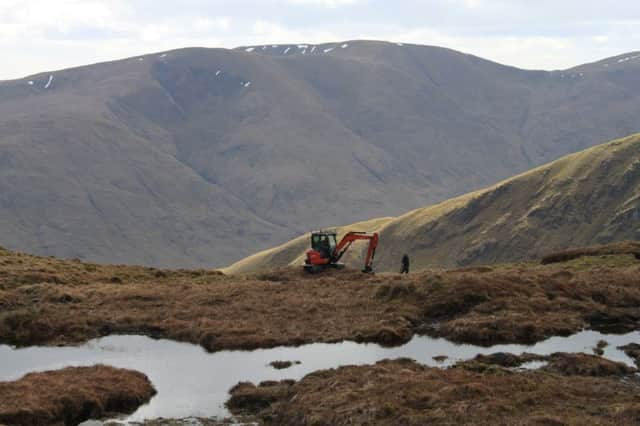A more sustainable approach is needed


Farmland has an important role to play in tackling flooding and climate change. However, for it to do so effectively our farming systems will need to change significantly.
For years intensive arable and dairy farming has been in the lowlands, while our rugged uplands have been home to more than six million hardy sheep, able to withstand the tough climate.
Advertisement
Hide AdAdvertisement
Hide AdWhile these systems evolved to help feed a growing population, they now face challenges, especially as our climate is now very visibly changing.
Farming practices need to change. Not only to help reduce greenhouse gas emissions but also to adapt to the marked changes in Scotland’s climate and more extreme weather events.
In addition, while there can be marked differences in the agricultural and environmental challenges facing lowland or upland farming systems, common to both are concerns about water quality and flooding. The way farmland is managed can have important implications for the scale and severity of flooding experienced by communities alongside our rivers and burns.
Taking into account what is referred to as climate change mitigation and adaptation will strongly influence the future structure of our lowland and upland farming systems. So, in what ways do our farming systems need to change?
Firstly, more investment will be needed to help upland farms restore degraded peatlands in the hills and establish more woodland at lower levels.
Peat soils in Scotland contain almost 25 times as much carbon as all other plant life in the UK. The carbon stored in Scottish soils, especially in peat and peaty soil, is equivalent to more than 180 years of our greenhouse gas emissions at current emission rates. Healthy peatlands lock up carbon while absorbing and storing more. They can also act as giant sponges, holding back water during periods of high rainfall.
These fragile habitats have been damaged in recent decades through natural erosion and by drainage carried out during attempts to make the land fit for farming and forestry. Restoring degraded peatlands by re-vegetating bare areas and blocking ditches to re-wet the peat stops the processes causing emissions of greenhouse gasses like carbon dioxide and methane.
Peatland restoration also alleviates flooding by slowing down water flowing off the hill. It improves water quality by reducing the amount of sediment. Finally, once peatlands start to function properly again, there are major nature conservation benefits for the wide range of plants and animals relying on them.
Advertisement
Hide AdAdvertisement
Hide AdSecondly there is a need to establish more woodland on the lower parts of our upland farms. This would make more shelter available to livestock exposed to increasing extreme weather events. It would also provide more wildlife habitats and if trees are planted in the right places, also help reduce downstream flooding by holding back the water from saturated moorlands.
Down in the lowlands the focus must shift to increasing the variety of habitats on our farms, both to improve biodiversity and to reduce the flood risk. The challenge on lowland farms is to maintain profitable food production while increasing the diversity of habitats like woodlands, unmanaged field margins, wetlands and wooded riversides. These would benefit both farmland biodiversity and help capture nutrients and soil escaping from fields into watercourses.
Finally combining some of these elements with recreating meanders on rivers, establishing field storage ponds to retain flood water, and managing those fields to reduce soil and water run-off would also provide ways of mitigating flood events by slowing the flow of water through the lowlands.
A two-day conference being held in Edinburgh on 1 and 2 of March (What future for our farming systems? Environmental challenges and integrated solutions) will seek to address these complex issues and encourage debate on the benefits to be gained from more sustainable resource use and greater integration of different land uses on lowland and upland farming systems.
The conference is the 11th in a series of biennial Agriculture and the Environment conferences organised by Scotland’s Rural College (SRUC) and the Scottish Environment Protection Agency (Sepa), in association with the Centre for Ecology & Hydrology (CEH), Forest Research, the James Hutton Institute (JHI) and Scottish Natural Heritage (SNH).
Upland and lowland farming are markedly different but they have one thing in common - in order to be truly sustainable they will need to change substantially. Only then can they increase their resilience to the numerous future challenges they, and we, are facing.
SEE ALSO